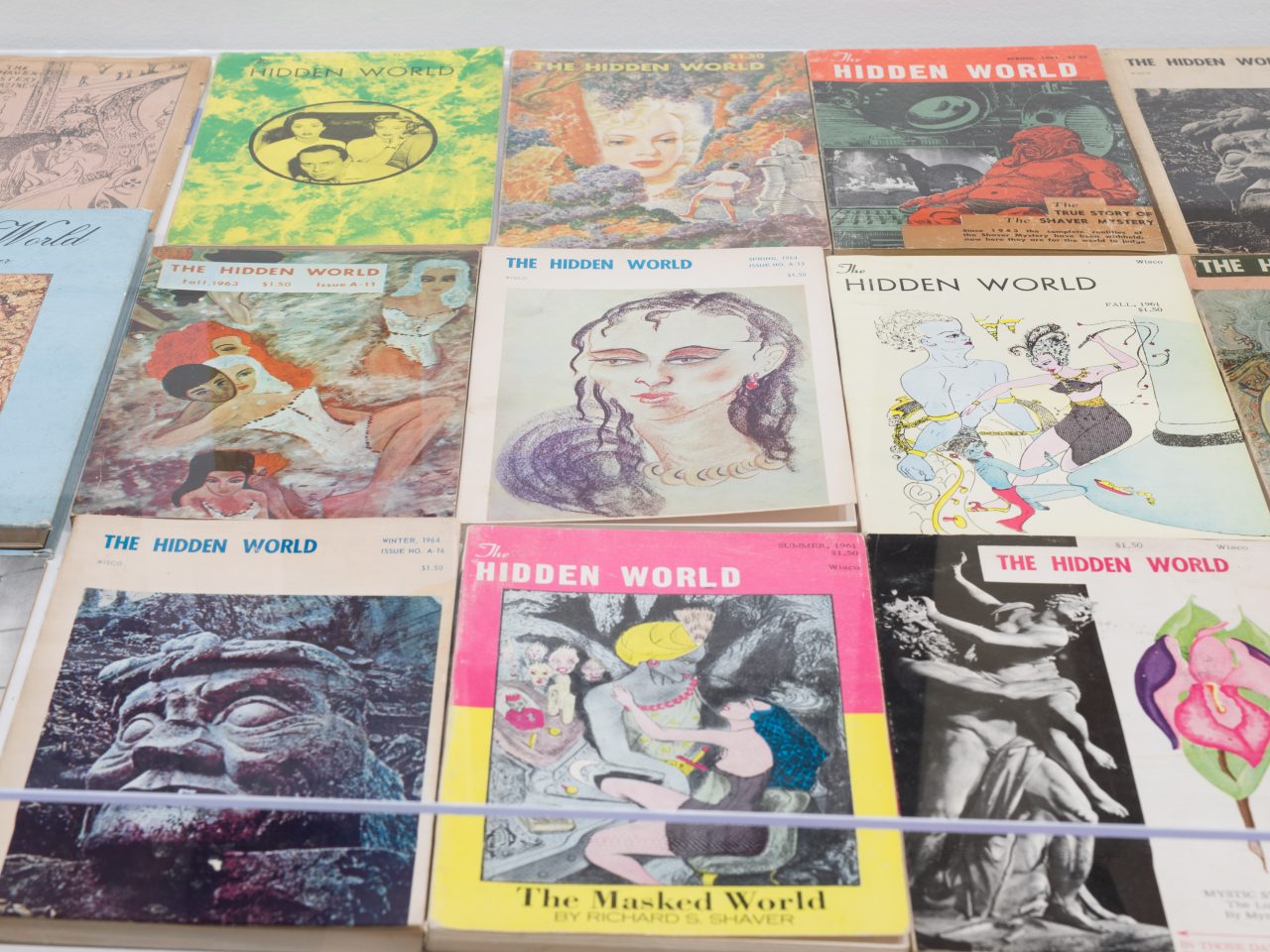Michigan Stories: Mike Kelley and Jim Shaw is organized by the Eli and Edythe Broad Art Museum at Michigan State University and co-curated by Marc-Olivier Wahler, Director, and Carla Acevedo-Yates and Steven L. Bridges, Associate Curators. Support for this exhibition is provided by the Ringier Collection, Switzerland, and the Eli and Edythe Broad endowed exhibitions fund.
About the Exhibition
New Year’s Eve, 1974. Ann Arbor, Michigan. The sounds of a vacuum cleaner, a coffee can, and a violin. It was an unusual version of Black Sabbath’s “Iron Man” that was being played by the newly formed proto-punk band Destroy All Monsters—an experimental group consisting of the artists Mike Kelley, Jim Shaw, Cary Loren, and Niagara. A while later, someone unplugged their speakers and the show was over.
Fast forward a few years and there are more Michigan stories to be told, this time through the many signs, symbols, and rituals that Mike Kelley (1954–2012) and Jim Shaw (b. 1952) accumulated through their work, in a meticulous if not obsessive manner. These source materials, culled from the vernacular cultures native to their midwestern upbringing, have been continuously reworked over the course of their careers, cycling through different projects, returning again and again like recurring and persistent musical riffs. Religious and secular rituals, folk tropes, zines, comic books, secret societies, conspiracy theories—the fears, desires, and beliefs of diverse subcultures displayed through narrative illustrations, objects, and source materials.
Against the backdrop of 1960s counterculture, Kelley and Shaw shared a lifelong friendship and common background: an upbringing and education in the state of Michigan. After growing up in the Detroit area and Midland, respectively, Kelley and Shaw met in Ann Arbor at the University of Michigan, then moved to Los Angeles in 1976 to pursue graduate school at the California Institute of the Arts. Michigan Stories is the first exhibition to place these artists’ practices alongside each other in historical context, approaching their work as parallel visual meditations on midwestern culture in particular, and on American culture more broadly.






